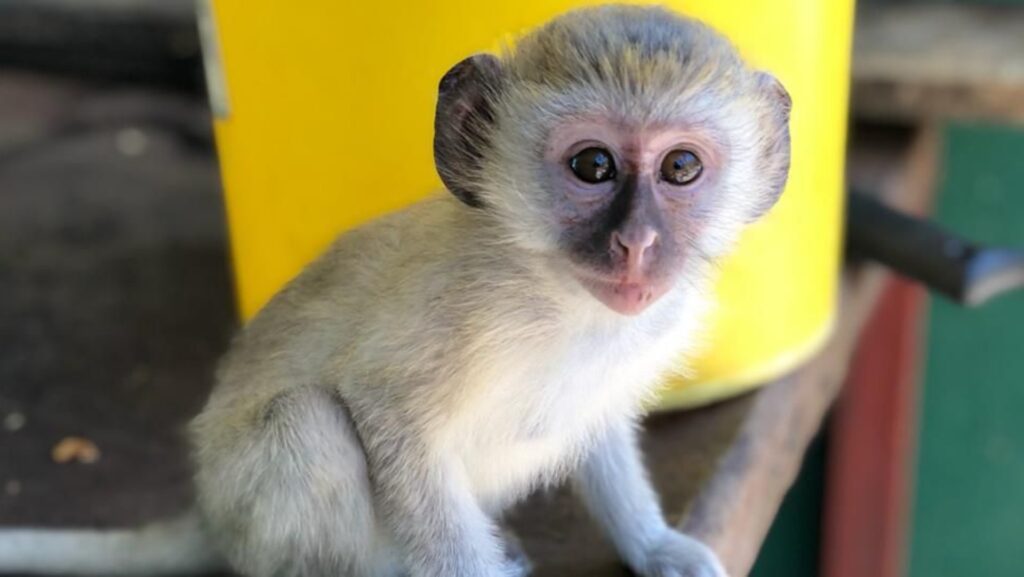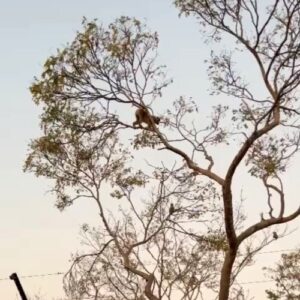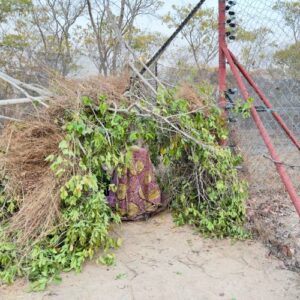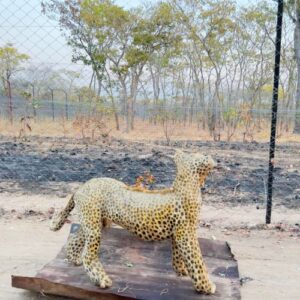How to not get eaten
Rescued baboons and vervets are learning how to avoid predators, thanks to the ingenuity of the Zambia Primate Project, and with Born Free’s support.

A rescued vervet monkey (c) Zambia Primate Project
If you were taken from your mother and stolen from the wild as an baby, how can you learn how to avoid predators before you’re ready to be released? Our long-term colleagues at Zambia Primate Project have been remarkably creative helping orphan monkeys safely return to the wild.
Established with the help of Born Free in 2009 and supported ever since, Zambia Primate Project is a life-changing wildlife rescue initiative, managed by Games Rangers International. This extraordinarily successful programme rescues, rehabilitates and releases back to the wild orphaned and injured vervet monkeys and baboons – victims of the illegal wildlife trade, or injured due to human intervention.

Training for release back to the wild (c) Zambia Primate Project
Tragically, mother monkeys are killed for meat in Zambia, their babies sold into the illegal pet trade. As the babies grow and develop sharp canine teeth, they are usually held captive with short, tight ropes around their waists, often tormented and harassed by people and village dogs.
Over the years, Zambia Primate Project (ZPP) team members have rescued and released hundreds of such primates. The survival rate of monkeys released currently averages between 85% and 100% at 12 months post-release, making ZPP one of, if not the, most successful primate release projects in the world.
One of the contributing factors of this impressive survival rate is ‘predator avoidance training’, given to each release group as they are prepared to be returned to the wild. So their rehabilitation doesn’t just involve nutritious food, expert care and medical treatment, but also active teaching, so these animals can develop their latent or lost skills necessary for independent survival in the wild.

Predator training (c) Zambia Primate Project
As you can imagine, one of the vital skills for primate survival is how to respond to a potential predator, such as a leopard or snake. Such natural ‘anti-predator behaviour’ reduces the probability of an individual or their kin being killed. However, ZPP’s pre-release troops mostly comprise of orphans. Many, if not all, have been isolated from predators – having been taken from their mothers and the wild at a young age.
In general, monkeys need to demonstrate anti-predator behaviour the very first time they encounter a predator. However, animals can improve their response with experience. So ZPP carries out predator avoidance training as a key strategy in ensuring their release troops have sufficient survival skills.
But how do you teach such skills? Before they are released, each group is presented with models of both snakes and leopards. At the same time, the ZPP team plays an audio of appropriate alarm calls – the sounds monkeys naturally make in response to each predator. As much as possible, the team remains hidden during this training, the researchers carefully recording how individual monkeys responds.

Life-sized model leopard (c) Zambia Primate Project
As you can see, the team has created a life-size model leopard, which they hide in some ‘temporary bushes’ by the monkeys’ enclosure. Then, hidden at the far end of the enclosure, they pull the leopard out on a sled with a long wire along the side of the enclosure, playing the sound of a monkey’s ‘leopard call’ to intensify the experience. For the snake training, a rubber snake is pulled along instead, this time with a ‘snake call’, again making sure the team can’t be seen (which could skew the response).
With both predators, the aim is for individual primates to respond by retreating to the safety of the trees, utilising the smallest branches (upon which a leopard could not climb) while some of the adults exhibit protective behaviour and elicit alarm calls.
What a privilege to be able to support such fascinating and impactful training, and to contribute to the well-being, and ultimately the conservation, of two incredible species.
